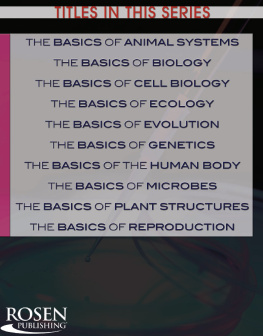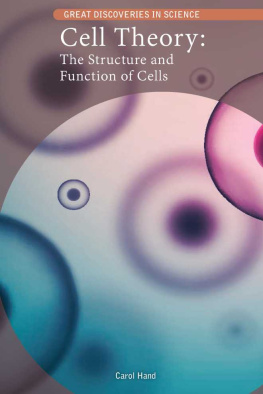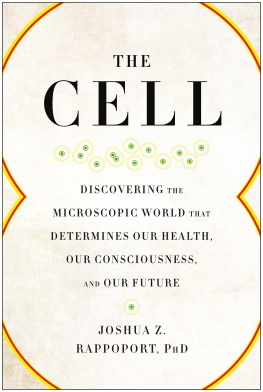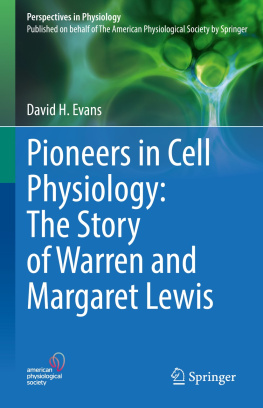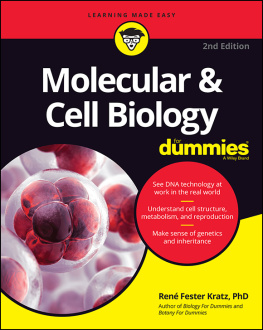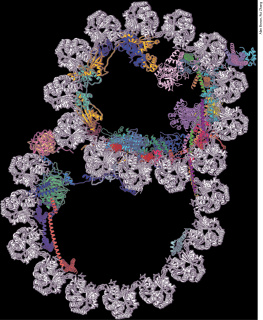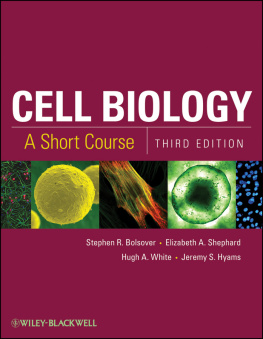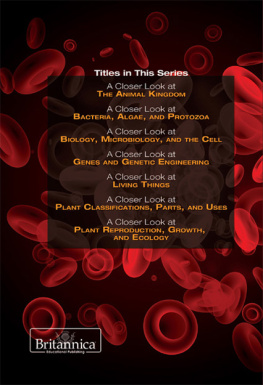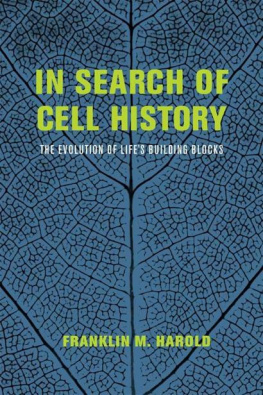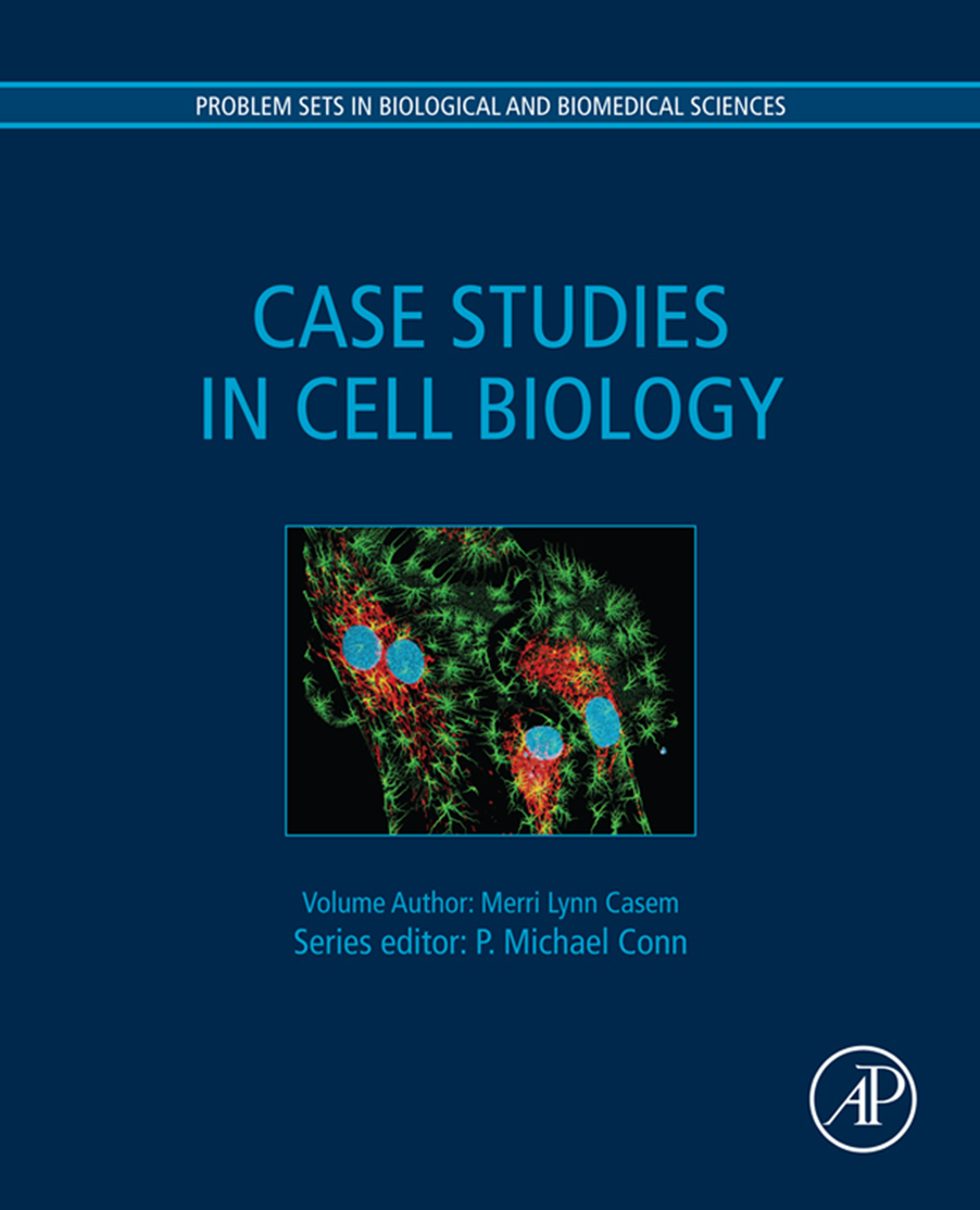Case Studies in Cell Biology
Merri Lynn Casem BA, PhD
Department of Biological Science
California State University
This volume is part of the Problem Sets in Biological and Biomedical Sciences series
Series Editor: P. Michael Conn
A complete list of books in this series appears at the end of the volume
Table of Contents
Copyright
Academic Press is an imprint of Elsevier
125, London Wall, EC2Y 5AS, UK
525 B Street, Suite 1800, San Diego, CA 92101-4495, USA
50 Hampshire Street, 5th Floor, Cambridge, MA 02139, USA
The Boulevard, Langford Lane, Kidlington, Oxford OX5 1GB, UK
Copyright 2016 Elsevier Inc. All rights reserved.
No part of this publication may be reproduced or transmitted in any form or by any means, electronic or mechanical, including photocopying, recording, or any information storage and retrieval system, without permission in writing from the publisher. Details on how to seek permission, further information about the Publishers permissions policies and our arrangements with organizations such as the Copyright Clearance Center and the Copyright Licensing Agency, can be found at our website: www.elsevier.com/permissions.
This book and the individual contributions contained in it are protected under copyright by the Publisher (other than as may be noted herein).
Notices
Knowledge and best practice in this field are constantly changing. As new research and experience broaden our understanding, changes in research methods, professional practices, or medical treatment may become necessary.
Practitioners and researchers must always rely on their own experience and knowledge in evaluating and using any information, methods, compounds, or experiments described herein. In using such information or methods they should be mindful of their own safety and the safety of others, including parties for whom they have a professional responsibility.
To the fullest extent of the law, neither the Publisher nor the authors, contributors, or editors, assume any liability for any injury and/or damage to persons or property as a matter of products liability, negligence or otherwise, or from any use or operation of any methods, products, instructions, or ideas contained in the material herein.
British Library Cataloguing-in-Publication Data
A catalogue record for this book is available from the British Library
Library of Congress Cataloging-in-Publication Data
A catalog record for this book is available from the Library of Congress
ISBN: 978-0-12-801394-6
For information on all Academic Press publications visit our website at http://store.elsevier.com/
Typeset by Thomson Digital
Publisher: Sara Tenney
Acquisition Editor: Jill Leonard
Editorial Project Manager: Fenton Coulthurst
Production Project Manager: Luca Prez
Designer: Mark Rogers

Dedication
I dedicate this work to the memory of my husband, Edward P. Casem Sr, and to the two fine young gentlemen I am proud to call my sons. I would also like to express my gratitude to the professors that inspired my academic career; Marvin J. Rosenberg, C. Eugene Jones, Charles Lambert, and Leah T. Haimo.
Biography
Merri Lynn Casem earned her doctoral degree in Cellular and Molecular Biology from the University of California, Riverside, working in the laboratory of Dr Leah Haimo, where she investigated the role of the microtubule motor protein cytoplasmic dynein, in synaptic vesicle transport. She spent 5 years as a visiting assistant professor at the Keck Science Department of the Claremont Colleges before joining the faculty of the Department of Biological Science at California State University, Fullerton. There, she has been actively involved in curriculum development and biology education research in addition to her work on cellular and molecular aspects of the biology of spider silk and early spider embryogenesis. Dr Casem has also been a member of the Education Committee of the American Society for Cell Biology, and has recently been appointed as the Director of Nonmajors Biology, at CSU Fullerton.
Preface
The ability to read and critically evaluate primary literature is a fundamental skill in the sciences. The best way to develop this skill is through practice. I began writing case studies, as a way to introduce primary literature to my freshmen Cell Biology classes. Students have reported that this early exposure to the elements of primary literature had a positive impact on their subsequent upper division coursework.
Each case study in this collection is built around one or more core concepts in Cell Biology. By presenting concepts outside the context of a traditional textbook, I hope to help students appreciate the dynamic nature of science and relevance of those concepts to a broader understanding of our world. Questions are provided throughout each case study to engage students, challenge them to think critically, and make connections between concepts. Most importantly, each case study allows students to gain practice in the evaluation and interpretation of graphs, figures, and tables excerpted from the original article.
I use case studies for in-class, small group activities in my lecture sections. Group work in a large (200+) class is greatly facilitated by additional support personnel; either graduate teaching assistants, or as is the case for my course, advanced undergraduate supplemental instruction leaders. Additionally, the use of clickers or similar technology can provide immediate assessment of student understanding. I encourage you to be creative in the adaptation and implementation of these case studies in your courses.
Best regards
Merri Lynn Casem
Chapter 1
Introduction to Scientific Method from a Cellular Perspective
Summary
Science is a creative human endeavor that can take many forms depending on the field of study. However, at its core, scientific research follows a defined series of steps known as the scientific method to arrive at conclusions about the world that can be considered valid and reliable. This case study uses the work of C.M. Feldherr and D. Akin (Signal-mediated nuclear transport in proliferating and growth-arrested BALB/c3T3 cells. J Cell Biol 1991;115:933939) as an example of application of the scientific method to a problem in cell biology. The case starts with the observation that import into the nucleus differs between actively dividing and growth-arrested tissue culture cells. Hypotheses are proposed and rejected as these researchers pursue their research questions. The steps of prediction, experimental design, data collection, and analysis are illustrated throughout this study.
Keywords
hypothesis
prediction
statistics
null hypothesis
nuclear transport
Subchapter 1.1
Scientific Method in Action
Introduction
The scientific method is the process of asking and answering questions about the world through the collection of data from carefully designed and controlled experiments. Communication of the results of scientific research, through peer-reviewed primary literature , allows those results to be challenged and reexamined by others. Replication of scientific results validates the answers to our questions. At its best, science reveals truths, independent of human bias or prejudice.


